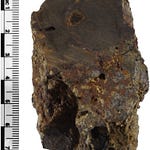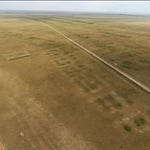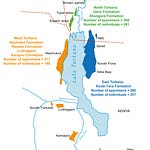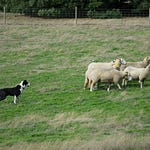In the deep past, long before written records or monumental architecture, human groups took part in a migration that would come to define the edges of our species' range. From the icy expanses of North Asia to the farthest tip of South America, early humans embarked on a journey that would span 20,000 kilometers and thousands of years. A new genomic study1, led by Elena Gusareva and colleagues from the GenomeAsia100K consortium, provides the clearest map yet of this extraordinary movement, revealing both the scope of ancient human adaptability and the hidden costs of isolation.

A map etched in DNA
By analyzing the genomes of 1,537 individuals across 139 ethnic groups in North Eurasia and the Americas, the research team reconstructed ancient migratory paths that once wound through Siberian tundra, over the Bering Land Bridge, and down the spine of the Americas. The project offers unprecedented resolution of how populations split, adapted, and declined across millennia.
One of the study's starkest revelations: all contemporary Indigenous populations of South America derive from just four ancestral groups—Amazonians, Andeans, Chaco Amerindians, and Patagonians—who branched off from a shared lineage in Mesoamerica roughly 13,900 to 10,000 years ago.
"Migration through the Isthmus of Panama acted like a funnel," the authors explain. "Once groups entered South America, they were immediately separated by geography, and thus by genetics."
That separation, over thousands of years, came at a cost. Unlike the genetic richness seen in Africa and Eurasia, the South American groups show signs of pronounced genetic bottlenecks: lower diversity, high homozygosity, and reduced variation in key immune system genes. This was especially true for isolated populations like the Kawésqar in Patagonia, whose ancestors made it to the southernmost tip of the continent.
Isolation and immune vulnerability
The Kawésqar, who once navigated the fjords of southern Chile in bark canoes, now carry some of the lowest genetic diversity recorded in any human group. Genomic data shows that their effective population size has shrunk by nearly 80% over the past 10,000 years. The causes were both environmental and demographic. The Andes, the Amazon, and the arid Chaco region all contributed to genetic isolation.
That isolation impacted health. Reduced variation in human leukocyte antigen (HLA) genes, which regulate immune responses, could help explain why Indigenous communities across the Americas have historically suffered disproportionately from infectious disease outbreaks introduced by outsiders.
"Founder effects and long-term population isolation appear to have eroded immunogenetic diversity," the authors note, raising the stakes for public health measures tailored to Indigenous needs.
Echoes from the north
While South American diversity constricted, the populations of North Eurasia show a very different story. The Kets and Nenets of West Siberia, once widespread, share ancestry with many northern Eurasian groups and contributed significantly to the gene pool of modern Siberians.
Meanwhile, Beringian populations like the Inuit and Koryaks reveal adaptations to Arctic life at the genetic level: variations linked to cold resistance, lipid metabolism, and even sensory perception. One gene, CPT1A, which plays a role in fat metabolism, appears to have been favored in Arctic groups despite being associated with metabolic disorders in other contexts. Such trade-offs underscore how evolution is shaped by local environments.
The genetic data also confirm what archaeological footprints in New Mexico and ancient bones in Patagonia have long suggested: that human arrival in the Americas predates the Ice-Free Corridor and follows a rapid dispersal along the Pacific coast.
The human cost of endurance
Migration to South America wasn't just long; it was also final. The narrow isthmus that allowed entry also restricted return. Once populations spread south, they remained genetically marooned.
"This migration wasn’t a highway. It was a one-way path into isolation," said one of the co-authors. "And over time, that isolation took a toll on genomic resilience."
Some groups like the Andean highlanders, who developed adaptations to low oxygen environments, show more robust genetic diversity, likely due to later regional growth during the spread of maize horticulture. But many others did not rebound.
A future for ancient lineages
The study doesn’t just reconstruct the past—it also carries urgent implications for the present. As Indigenous populations face ongoing threats from environmental degradation, climate change, and health disparities, the genomic insights offer a roadmap for medical and cultural preservation.
"Understanding how long-term isolation affects immune gene diversity can inform vaccine development, public health outreach, and conservation of vulnerable communities."
Crucially, the study also challenges the long-held assumption that Europe holds the bulk of human genetic diversity. Instead, much of that richness resides in Asia—and is now fading in parts of the Americas. Protecting it, researchers argue, is not only a matter of heritage, but of survival.
Related Research
Moreno-Mayar, J. V., et al. (2018). Early human dispersals within the Americas. Science, 362(6419), eaav2621. https://doi.org/10.1126/science.aav2621
Campelo Dos Santos, A. L., et al. (2022). Genomic evidence for ancient human migration routes along South America's Atlantic coast. Proc. Biol. Sci., 289(1980), 20221078. https://doi.org/10.1098/rspb.2022.1078
Castro E Silva, M. A., et al. (2022). Population Histories and Genomic Diversity of South American Natives. Mol. Biol. Evol., 39(1), msab339. https://doi.org/10.1093/molbev/msab339
Flegontov, P., et al. (2019). Palaeo-Eskimo genetic ancestry and the peopling of Chukotka and North America. Nature, 570(7760), 236–240. https://doi.org/10.1038/s41586-019-1251-y
Gusareva, E. S., Dunwell, T. L., Bae, C. J., Suryadevara, N., Roca, A. L., Kim, H. L., Schuster, S. C., & GenomeAsia100K Consortium. (2025). From North Asia to South America: Tracing the longest human migration through genomic sequencing. Science, 388, eadk5081. https://doi.org/10.1126/science.adk5081









